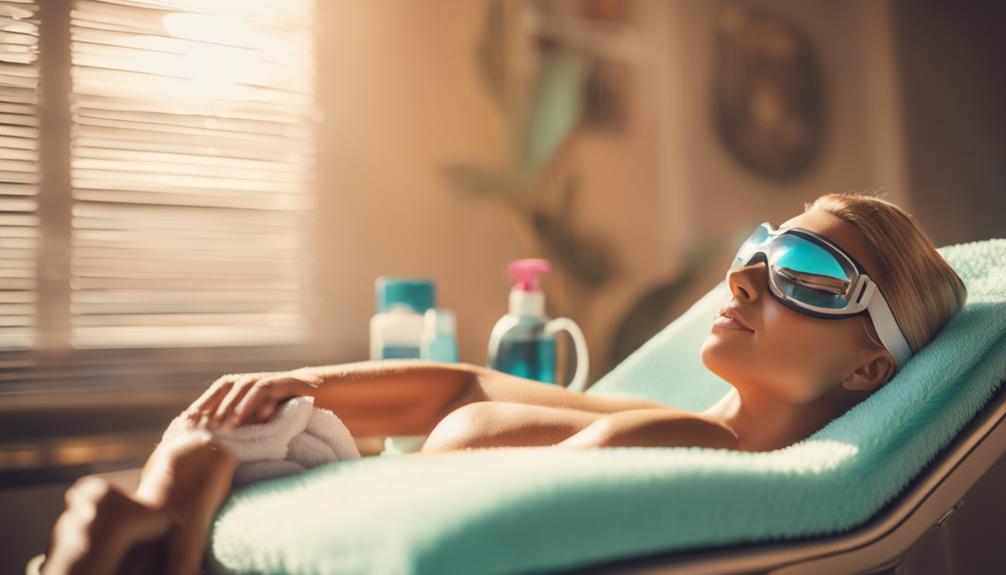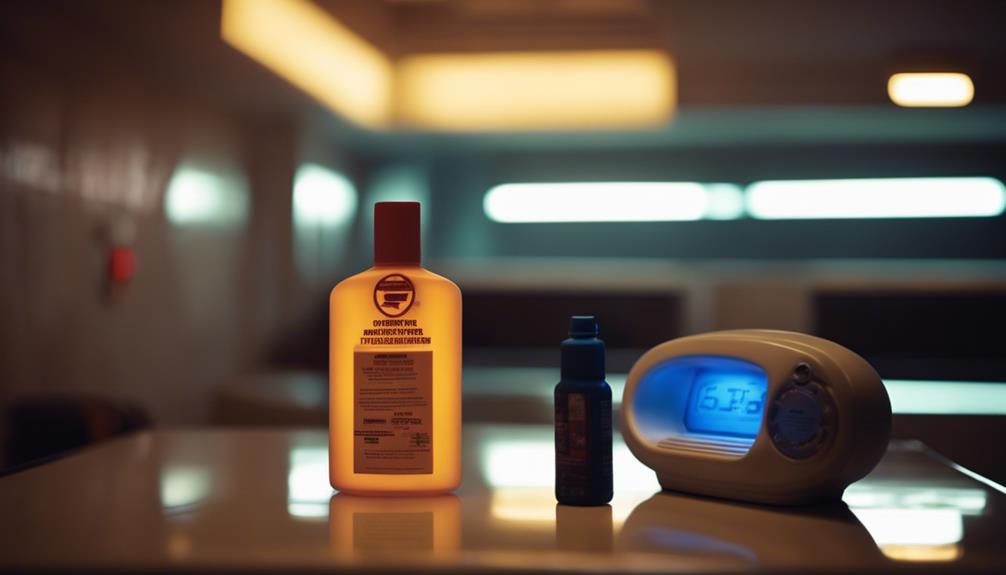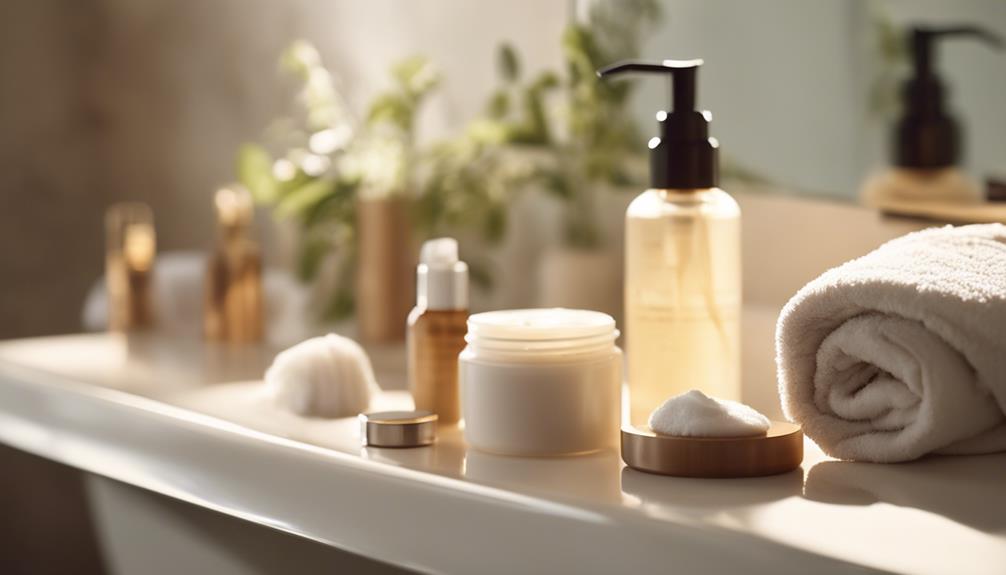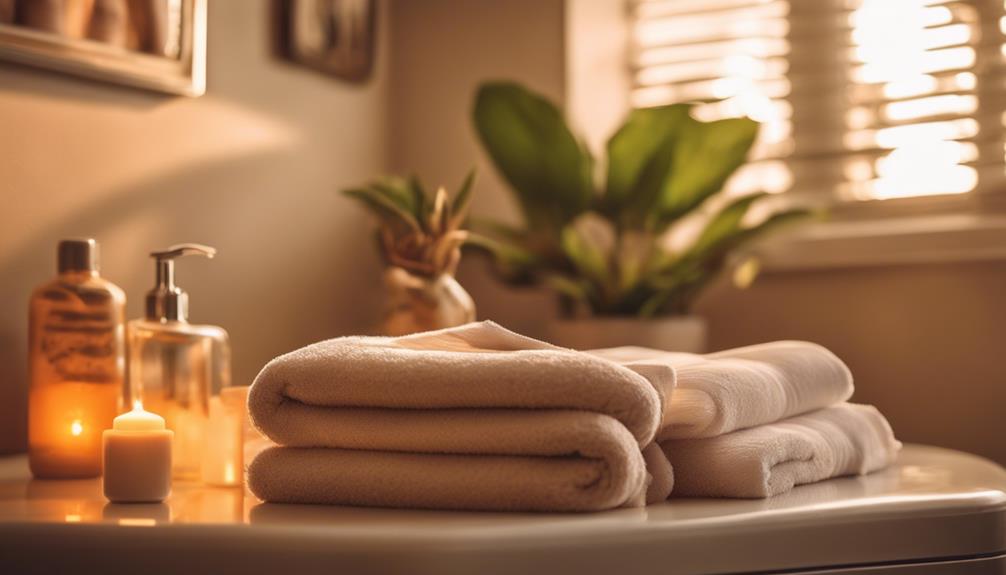Tanning beds can present serious health risks that should not be overlooked. Their use can increase the likelihood of developing skin cancer, particularly if you start tanning before the age of 30. Each tanning session contributes to cumulative damage, and no amount of UV exposure is considered safe. Protect your eyes by wearing high-quality goggles to prevent conditions such as cataracts. Prioritize cleanliness by disinfecting tanning beds and exfoliating your skin before tanning. Additionally, gradually increase your tanning time and stay hydrated to maintain the health of your skin. If you are interested in learning how to reduce these risks while still enjoying the tanning experience, there is more important information you should review.
Key Takeaways
- Indoor tanning significantly increases skin cancer risk, particularly melanoma, especially for those under 30 years old.
- Always use high-quality UV protection goggles to prevent immediate and long-term eye damage from harmful rays.
- Maintain hygiene by cleaning tanning beds with EPA-approved disinfectants before and after each session to prevent bacterial spread.
- Gradually increase tanning session duration to avoid skin damage and ensure safer tanning experiences.
Tanning Bed Risks
Tanning beds expose your skin to harmful UV radiation, dramatically increasing your risk of developing skin cancer. When you use tanning beds, you're not just aiming for a golden glow; you're elevating your chances of melanoma, basal cell carcinoma, and squamous cell carcinoma.
If you begin indoor tanning before age 30, your risk soars even higher. Shockingly, about 75% of skin cancer cases are linked to UV exposure, and 1 in 5 Americans will face a skin cancer diagnosis in their lifetime.
There's no safe level of UV tanning—every session contributes to cumulative skin damage. Being aware of these risks is vital for your skin health.
Prioritize safer alternatives and protect yourself from potential harm.
Skin Cancer Types
Understanding the different types of skin cancer is important, especially since exposure to tanning beds greatly raises your risk of developing these conditions.
The three main types are basal cell carcinoma, squamous cell carcinoma, and melanoma. Basal cell carcinoma is the most common and usually doesn't spread, but squamous cell carcinoma can be more aggressive if left untreated. Melanoma is less common but poses a higher risk of mortality.
Starting indoor tanning before age 30 dramatically increases your chances of developing these cancers. With about 1 in 5 Americans facing a skin cancer diagnosis in their lifetime, early detection is essential.
Regular skin checks can help you catch potential issues early, so stay vigilant and protect your skin.
Eye Protection Importance

Consistently wearing proper eye protection during tanning sessions is essential to safeguarding your vision from harmful UV rays. Neglecting to protect your eyes can lead to serious damage and increase your risk of eye-related issues.
Here are three key reasons to prioritize eye safety:
- Prevent Eye Damage: UV rays can cause immediate and long-term damage to your eyes, leading to conditions like cataracts.
- Choose the Right Goggles: Make certain you use goggles with a 100% UV protection rating. Wrap-around designs offer the best coverage.
- Regular Sunglasses Won't Cut It: Standard sunglasses don't provide sufficient protection against UV rays in tanning beds.
Hygiene and Safety Practices
Maintaining hygiene and safety practices in tanning beds is essential to prevent the spread of bacteria and guarantee a healthy tanning experience.
Always clean the tanning bed before and after each use using EPA-approved disinfectants; this helps eliminate any harmful germs.
Don't forget to replace bulbs as recommended to ascertain proper UV output and efficiency.
Schedule a deep cleaning at least once a month for thorough sanitation.
Before tanning, prepare your skin by exfoliating and moisturizing, but avoid using SPF lotions. This guarantees your skin is ready for ideal tanning.
Accessories for Tanning Beds

When using tanning beds, having the right accessories can enhance your experience and guarantee better results. Here are three essential accessories you should consider:
- High-Quality Goggles: Protect your eyes from harmful UV rays with goggles that offer 100% UV protection. Regular sunglasses won't do the job.
- Tanning Bed Face Covers: These provide added UV protection for your face, ensuring an even tan while minimizing skin damage.
- Bronzers and Accelerators: Using these products can intensify your tan and help you achieve a deeper, more radiant glow.
Don't forget to keep a towel handy for comfort and hygiene, and always stay hydrated to maintain your skin's elasticity.
With the right accessories, you can enjoy a safer and more effective tanning experience.
Tips for Safe Tanning
To guarantee a safer tanning experience, always prepare your skin properly and follow recommended guidelines.
Start by exfoliating and moisturizing your skin to remove dead cells and hydrate. Avoid applying SPF lotions just before tanning, as they can interfere with the tanning process.
Wear high-quality goggles to protect your eyes from harmful UV rays. Keep your sessions short, especially if you're new to tanning beds, and gradually build your exposure.
Stay hydrated by drinking plenty of water before and after tanning to maintain skin elasticity. Use a towel for comfort and hygiene during your session.
Understanding UV Radiation

Understanding UV radiation is key to making informed decisions about tanning, as it directly affects your skin and overall health. Here's what you need to know:
- Types of UV Radiation: UVA rays penetrate deep into the skin, causing aging and DNA damage, while UVB rays are responsible for sunburn and play a significant role in developing skin cancer.
- Skin Cancer Risk: Exposure to UV radiation from tanning beds increases the likelihood of developing melanoma and other skin cancers, especially if you start tanning before age 30.
- Cumulative Damage: Each tanning session adds up over time, increasing your risk for long-term skin damage.
Frequently Asked Questions
How Long Should I Wait Between Tanning Bed Sessions?
You should wait at least 24 to 48 hours between tanning bed sessions. This allows your skin to recover and reduces the risk of overexposure. Always monitor your skin's reaction to avoid damage.
Can I Tan if I Have Sensitive Skin?
If you have sensitive skin, you should approach tanning cautiously. Consider using a lower intensity setting, apply a protective lotion, and limit your exposure time to avoid irritation or adverse reactions. Always listen to your skin's signals.
What Are the Signs of a Tanning Bed Burn?
When you overindulge in tanning beds, your skin might sizzle like bacon on a grill. Signs of a tanning bed burn include redness, swelling, pain, and peeling. If you notice these, it's time to cool it down!
Are There Alternatives to Tanning Beds for Bronzed Skin?
Yes, there are alternatives to tanning beds for bronzed skin. You can try self-tanners, bronzing lotions, or spray tans. These options provide a sun-kissed glow without the harmful UV exposure associated with tanning beds.
Is Indoor Tanning Safe During Pregnancy?
Did you know 1 in 5 Americans will develop skin cancer? Indoor tanning during pregnancy isn't safe; it exposes you to harmful UV radiation. It's best to avoid tanning beds and choose safer alternatives instead.
What are the Dangerous Risks of Using Tanning Beds and How Can They be Minimized?
Many people are unaware of the essential tanning bed safety tips that can minimize the dangerous risks associated with using these devices. Without following these precautions, users are at an increased risk of skin cancer, premature aging, and eye damage. It is crucial to follow these tips to protect your health.
What Are the Vital Tips for Protecting Your Skin from Tanning Bed Risks?
When using tanning beds, it’s crucial to protect your skin from dangers by following some essential tips. Always wear protective eyewear and an SPF lotion. Limit your sessions to avoid overexposure, and beware of any signs of irritation or burns. Regularly moisturize and attend skin check-ups.
What are the Dangerous Risks of Using Tanning Beds and how can I use them safely?
Using tanning beds comes with dangerous risks such as skin cancer, premature aging, and eye damage. To use them safely, follow essential tanning bed safety tips like wearing protective eyewear, limiting sessions, and using sunscreen. It’s important to prioritize your health when it comes to tanning bed usage.
Conclusion
As you step away from the allure of the tanning bed, remember that a sun-kissed glow can come at a steep price.
Picture your skin as a canvas; every session etches invisible scars that may haunt you later.
By prioritizing safety, protecting your eyes, and embracing responsible tanning practices, you can create a masterpiece without compromising your health.
Choose wisely, and let your radiance shine from within, free from the shadows of risk that lurk beneath the surface.










